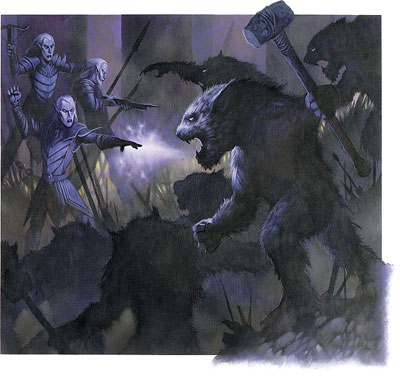You may have noticed that I have not mentioned that much about RMU. The truth is that I have had a collegue on annual leave, I have had to go on 6 sessions of full day training, I have been away my self (a paintballing weekend) and various other demands on my time (blame the Greeks). I simply have not had time to read the books in the detail they deserve and conversely there is a really detailed discussion going on on the ICE forums that is far better than anything I could write with the added advantage of feedback from the actual authors.
If you want to know more about RMU then head over here http://www.ironcrown.com/ICEforums/. I will deal with each book in turn when I have the time to do it justice.
RM2 vs My brand of RMC
One of my PBP players today asked me where have all the subterfuge skills gone. RM2 players are used to having dozens of skills detailing the minituae of every aspect of life it seems. For example they have Build Trap, Set Trap, Detect Trap and Disarm Trap in addition you can learn Trap Lore to give you a knowledge base to work from.
In my world I still have Trap Lore but the only skill for traps is Disarm Trap. As I explained to the player if you are looking for traps and it is a trip wire or pressure plate sort of affair then Perception is the skill to use. Just tell me what you are looking for and roll the dice. If it is a complex lock mechanism that you are studying in detail and you want to know if it has an embedded trap then the Disarm Trap skill is suitable.
What about the building and setting of traps? As I see it if you are relying on a trip wire or noose then I would use rope mastery, if it is a snare to all intents and purposes then why not use a foraging roll? If it is none of those but you can explain to me how you want it to work and how to set it up then I am good wth that. Not everything has to have a roll but if there is a chance of failure then we have 10 stats we can use. I am inclined to use a different mix of stat bonuses from case to case depending on the design of the trap. Some will require a more reasoned approach others nimble fingers and a steady hand. Trap Lore would come into this as well. If the principles are well know and obvious then a knowledge of Trap Lore will warn you of some of the common reasons for failure and tips to aid success.

So the most important thing is what are you trying to catch? If the answer is a rabbit then using the trap above is without a doubt foraging. If you want to catch an Orc then under RM2 you would need two completely different skills (Build and Set). Why is that?
Why Remove Skills from the Game?
I am not on a mission to remove skills from the game. What I noticed was that with every companion there were new skills being added. This puts pressure on the GM to give more Development Points each level, makes leveling up slower, makes each RM2 Character incompatible with any other game that didn’t use the same mix of companions and as almost every skills is coloured by how much scope each GM gives it makes playing the game under two different GMs potentially confusing.
Thieves are one of the nicest ‘skills based’ professions there is. They have good combat skills and their skill costs are pretty cheap normaly 1/3 for most subterfuge skills. RM2 then breaks this by adding so many skills that just to build and then set a trap requires two skills (effectively make a cost of 2/6) and two chances of fumbling (a net 10% chance or two attempts at not rolling 1-5 of an OE down roll).
It is not just thieves and subterfuge skills. Spell casters have Spell Mastery but also Spell Trickery. Why? I have rolled both these into one skill. We have different difficulty penalty gradings from Routine to Absurd for a reason. There is no reason as far as I am concerned to constantly break everything down and down into ever more granular skills.
There was a debate on the ICE forums about how many development points (DPs) do GMs give. Up until this current game I have always stuck to the original core rule for development points but I did used to give six free ranks as ‘hobby’ skills. This time I have tried using 25% of the characters normal DPs as hobby skills instead. Chances are I suspect that it will even out as pretty much the same but I would not be surprised if the the characters end up more limited by this method. I am thinking that if a character has just DPs to spend they are more likely to buy skills that are cheap for their profession. With a flat 6 ranks to allocate then you can pick from across the board of secondary skills irrespective of cost.
Rolemaster Lore
Rolemaster has ample scope for individualising a characters knowledge and learning from any possible background or upbringing. You can have as many Lore skills as you like and as many Craft skills as you like. This I do not have a problem with. I think it is one of the great things about rolemaster that every character cn be so unique AND true to the players vision. What I do not see is a cnstant need to add ever more skills or bloat to the a game system that already allowed heroes to be exactly what the players controling them envisioned.







